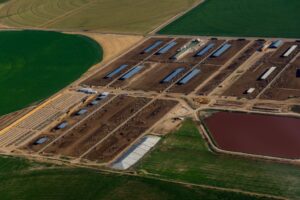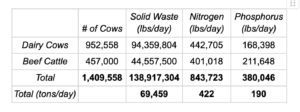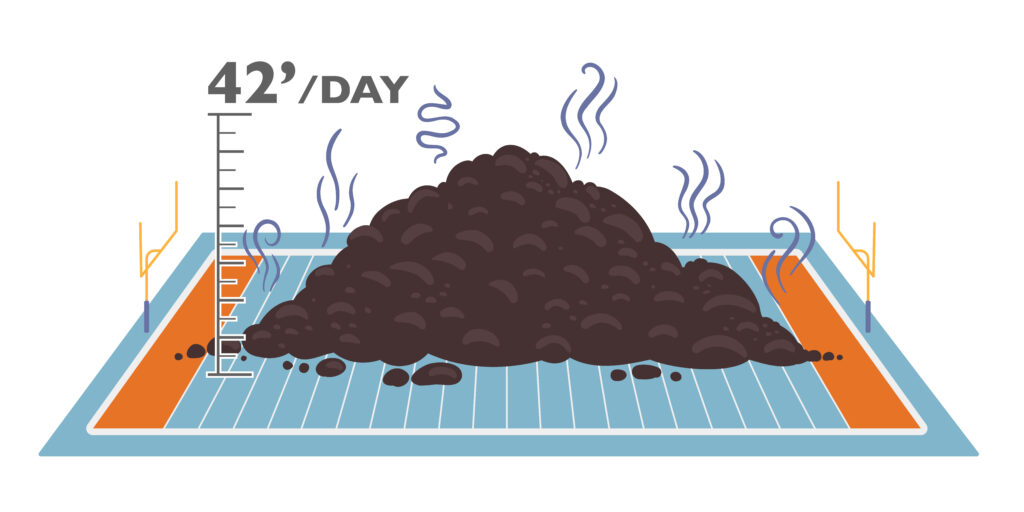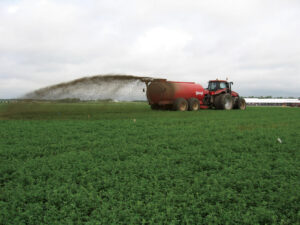Mountains of Manure: Idaho’s Mounting Problem
If you’ve ever driven through southern Idaho’s Snake River Plain, you’ve probably wrinkled your nose and thought, What’s that smell? The answer: cow manure—lots of it. Idaho ranks third in the nation for dairy cows and has a sizable beef cattle industry as well. This industry is a big part of the region's agricultural-based economy; according to a recent presentation by the University of Idaho, the dairy and beef industries in Idaho accounted for a whopping $6.7 billion in cash receipts in 2024—nearly 60% of all agriculture-related income. While some cows are raised on small family farms, the vast majority live on massive concentrated animal feeding operations (CAFOs), where up to 100,000 cows are packed into industrial-scale facilities.
The Waste Problem — By the Numbers
Idaho has a LOT of cows:
Source: 2024 Idaho Annual Statistical Bulletin published by the National Agricultural Statistics Service and ICL public records data from the Idaho State Department of Agriculture. Pollutant numbers are calculated using an approach from Penn State’s College of Agronomic Sciences and the best approximation of total solid waste, nitrogen, and phosphorus discharges. Based on statutory protections in Idaho, additional information on dairy and beef industry waste is considered proprietary information.
Let’s dive into those staggering numbers a bit deeper:
- A single dairy cow can produce over 100 pounds of solid waste daily, while beef cattle produce 60 to 75 pounds of solid waste per day. Cows also produce another 40-60 pounds of liquid waste (urine) per day.
- Idaho’s nearly 1 million dairy cows generate about 47,000 tons of solid waste per day (94 million lbs)!
- Add in beef cattle, and the total soars to nearly 70,000 tons daily—enough to bury Boise State’s iconic blue football field 42 feet deep in manure every single day.
- Over the course of a year, that football field-sized manure pile would tower 15,000 feet high—far taller than Idaho’s highest peak, Mt. Borah.

The Environmental Problem
It’s not just the sheer weight and volume of waste that’s a concern—it’s also what’s in it. Cow manure is loaded with nitrogen and phosphorus. These are essential nutrients that help us grow crops, but too much of them can be a bad thing, contaminating our drinking water supplies and fueling outbreaks of toxic algae in our waterways.So, where does all that nitrogen and phosphorus end up? In our rivers (via runoff) and in our groundwater (via leaching), unfortunately. In areas of the state that have a high density of cows, such as the Magic Valley, water quality data often shows elevated levels of nitrate (a form of nitrogen) and phosphorus. ICL has previously published a comprehensive Groundwater Report for the Magic Valley highlighting these impacts.Even though we know that cow waste is impacting our water quality, there are significant barriers to identifying the top polluters and holding them accountable. CAFO nutrient management plans are classified as “trade secrets” under Idaho law, meaning the public has no access to them. Even more concerning, not a single one of Idaho’s 274 CAFOs has a Clean Water Act permit to regulate pollution discharges—despite clear risks to water quality. Not all CAFOs have the potential for this kind of pollution discharge, but some CAFOs (like the 4 Bros Dairy near Shoshone) certainly do.
What Can Be Done?
Cows are not going away in Idaho anytime soon, nor is ICL advocating for that to happen in a wholesale manner. But we must acknowledge the environmental cost of supporting over 1.4 million cows in the state and take steps to minimize the impact.ICL will continue to hold polluters accountable while also building partnerships for broader watershed restoration. If you want to help restore the Snake River to a fishable, swimmable state, sign up here to stay informed!
